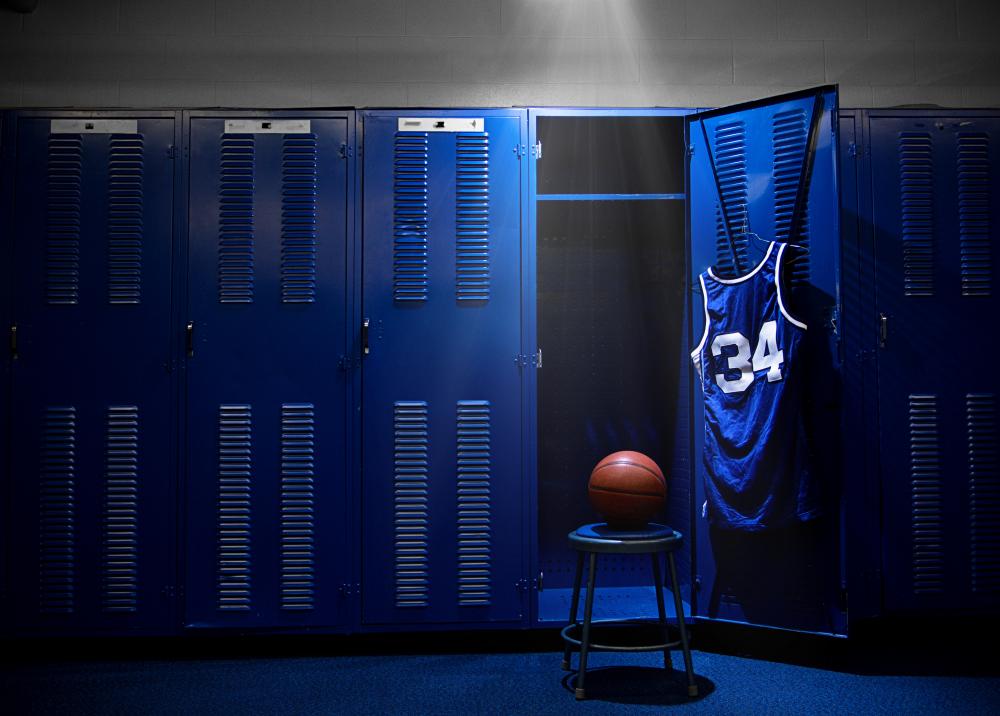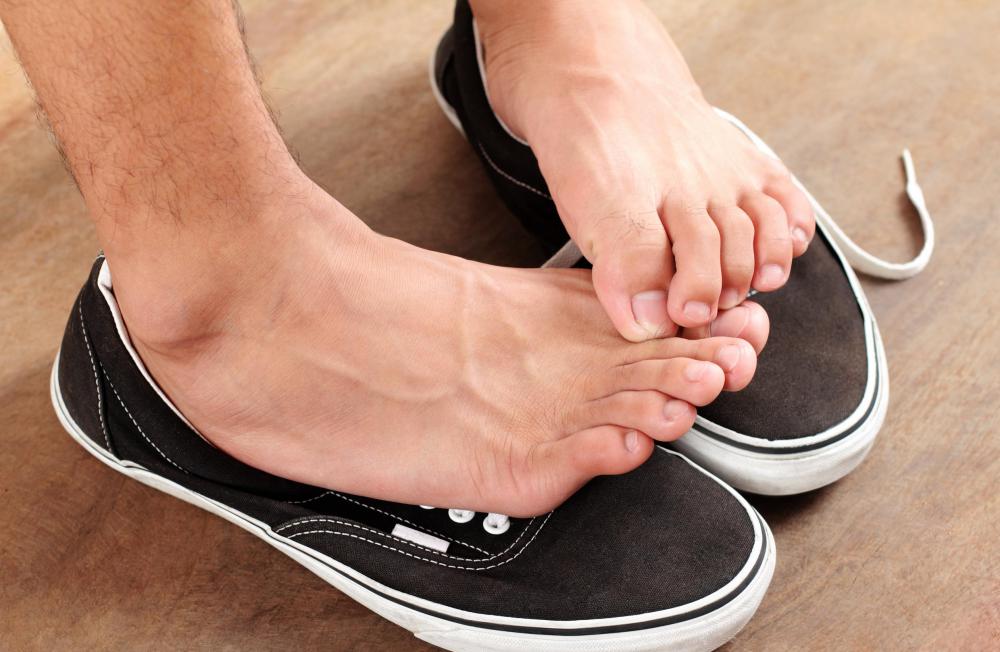At WiseGEEK, we're committed to delivering accurate, trustworthy information. Our expert-authored content is rigorously fact-checked and sourced from credible authorities. Discover how we uphold the highest standards in providing you with reliable knowledge.
How can I Treat Athlete's Foot?
Athlete's foot, also known as Tinea pedis, is a relatively common fungal skin infection. There are multiple types, with toe web infection, moccasin-type infection, and vesicular infections being the most common. With a typical toe web infection, the skin between toes peels or cracks. Moccasin-type infections also cause peeling and cracking, but on the bottom of the foot rather than the toes. Vesicular infections differ significantly: they begin with large, fluid-filled blisters usually on the top of the foot.
In most cases, treatment for athlete's foot is available over the counter. Non-prescription antifungals are available in cream forms to be spread directly on the affected areas. Over-the-counter medications include tolnaftate, miconazole, terbinafine, and clotrimazole.

If a case is especially severe or is not improved after treatment with non-prescription medication, a medical professional may prescribe stronger antifungals, which can come in similar forms to the over-the-counter creams or as pills intended to be taken orally. Many prescription treatments are simply higher dosages of the same medications available over the counter, although itraconazole, fluconazol, and butenafine are also used.

Most medical professionals are reluctant to prescribe oral antifungal medication unless a case of athlete's foot is severe because they are expensive and can cause significant side effects. Patients on these medications must be monitored and may need periodic testing for such side effects.
There are a wide variety of home remedies that have been used to treat athlete's foot, but not all treatments have been thoroughly researched, and they should be considered with caution. Home remedies can include the use of tea tree oil, which is available at most health food stores, as well as washing feet in any of number of solutions. Rubbing alcohol, vinegar, weak bleach mixture, garlic mixed with water, boric acid, and raw honey have all been suggested as treatments.

This funal infection can reemerge even after treatments with powerful medications. To prevent this, individuals should consider wearing sandals or shower shoes in locker rooms and other shared facilities. Individuals should keep their feet dry and wear shoes that allow for maximum airflow. Talcum powder can help keep the feet dry, reducing the opportunity for fungus to flourish.
AS FEATURED ON:
AS FEATURED ON:
















Discussion Comments
I recommend wearing flipflops and open toed sandals as much as possible to prevent athlete's foot. I know that's helped me a lot.
@fiorite- Rotating shoes does work, but when you have to work jobs that lead to wet feet athlete's foot can be inevitable. I used to work as a landscaper and a logger, so often my feet would be soaked by the end of the day. My best remedies were antimicrobial socks that wick perspiration away. I also use one of those menthol anti-fungal sprays every so often just to prevent Athlete's foot from starting. When I take my work boots off, I put them on my electric dryer, and wear my alternate pair the next day.
I have had athlete's foot a number of times before and it took me years to finally figure out what to do to prevent it from returning. One of the best preventative measures is to change shoes often. I have about five pairs of shoes that I rotate daily and it has made a world of difference.
I am a former athlete, and I am a current student so I am always on my feet. By rotating my shoes regularly, I always have dry shoes on my feet, and my other shoes have plenty of time to breathe. Since I started rotating shoes, I have not had a single outbreak of athlete's foot. It can be a pain, literally, having athlete's foot, but if you take the proper precautions you can keep it at foot's reach.
Post your comments